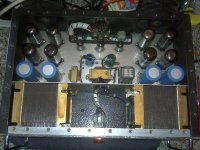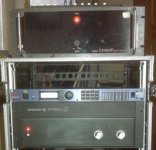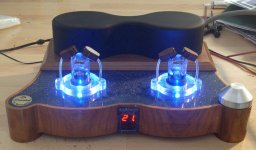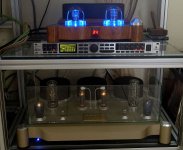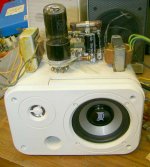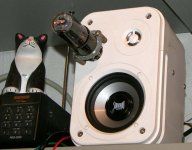Do you have some details on how you got that knob to do all those different things?that big knob on the right
Kees
Isn't it that a 'relaixed' board in your preamp?
http://www.eijndhoven.net/jos/relaixed/index.html
Erik
Isn't it that a 'relaixed' board in your preamp?
http://www.eijndhoven.net/jos/relaixed/index.html
Erik
It is based on this unit.I'm sure others (like me) would also like to know. Could you post some information for the rest of us, please?
http://www.vaneijndhoven.net/jos/switchr/design.html
azazello said: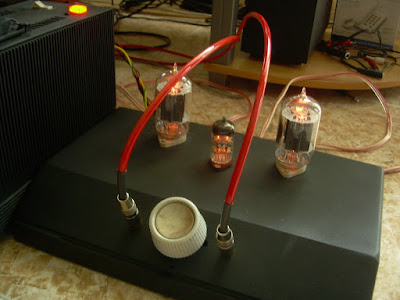
6LR8, Hammonds 125 FSE, GZ 34 /in PS black box/. Amazing sound !
TV tubes...you must get good imaging!
Is the pentode wired as a triode in the output? Using the small internal triode as a driver?
70L7 PC speaker testing..
Heres what I've done this weekend. I have a case of 100 NOS 70L7's, and decided I could break it open and use two of them. The input transformer is a 48 ohms to 5K 3 watt unit, and the output transformer is a 120V to 6.3VCT 0.6A filament transformer. It's based on this:
http://www.montagar.com/~patj/pc_speaker.htm
I may have to go to a regular output transformer, because I have very little low frequency response. The response seems severely tilted to the highs, to the point of "hissy-ness" on music. The best size fil. xfmr to use for this is a 1A or 1.5A and I don't have any. I found (late) a pair of "50C5 output transformer" new in the packages.
I could use more gain as well, although the PC seems to be able to overdrive the amp if pushed..
48:5000 is only 10:1 voltage step up. Bias is 7V, so I would need 14V peak, meaning 1.4V peak from the PC - it should be able to do that.
The whole thing is transformerless for power like an All-American 5, with the isolation being the input and output transformers. Right now I am waiting to see if the heater dropping resistor is going to melt the speaker cabinet, and have only put one together.
The rules for tube PC speakers is that only the tube(s) can show.. my rules anyway..
Heres what I've done this weekend. I have a case of 100 NOS 70L7's, and decided I could break it open and use two of them. The input transformer is a 48 ohms to 5K 3 watt unit, and the output transformer is a 120V to 6.3VCT 0.6A filament transformer. It's based on this:
http://www.montagar.com/~patj/pc_speaker.htm
I may have to go to a regular output transformer, because I have very little low frequency response. The response seems severely tilted to the highs, to the point of "hissy-ness" on music. The best size fil. xfmr to use for this is a 1A or 1.5A and I don't have any. I found (late) a pair of "50C5 output transformer" new in the packages.
I could use more gain as well, although the PC seems to be able to overdrive the amp if pushed..
48:5000 is only 10:1 voltage step up. Bias is 7V, so I would need 14V peak, meaning 1.4V peak from the PC - it should be able to do that.
The whole thing is transformerless for power like an All-American 5, with the isolation being the input and output transformers. Right now I am waiting to see if the heater dropping resistor is going to melt the speaker cabinet, and have only put one together.
The rules for tube PC speakers is that only the tube(s) can show.. my rules anyway..
Attachments
Hi all
My most recent work: the LS3i tube line stage.
Oversized power supply: 120VA trafo, pi filter cap/choke/cap and stabilized for B+, DC heaters.
Audio section (2 x 12AU7A) is a grounded cathode input stage and a "tweaked" cathode follower as the buffer stage and coupled to the outputs by Cambridge AC caps.
All signal wiring is milspec Tefzel hook up wire.
Chassis is a heavy gauge steel.
Wonderfull sound and improving by the day: those Tefzel teflon insulation wires and Cambridge coupling caps are tough guys to convince in yelding good audiophile sounds in the beguining...
We have to wait a good deal of listening time until everything starts to sing in an audiophile approved way...
Guess some 50 hours minimum.
[ ]s
Ricardo


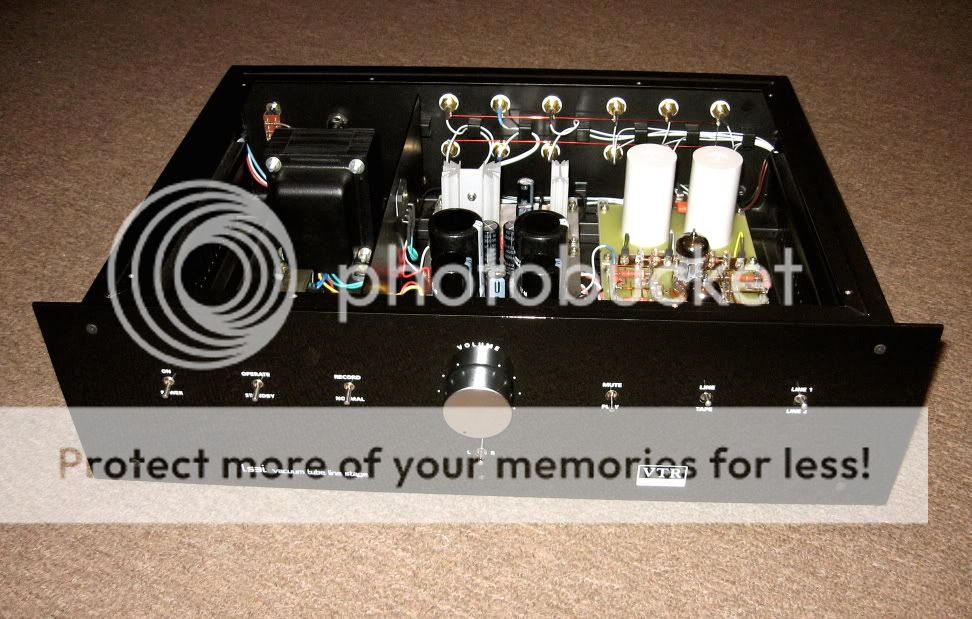
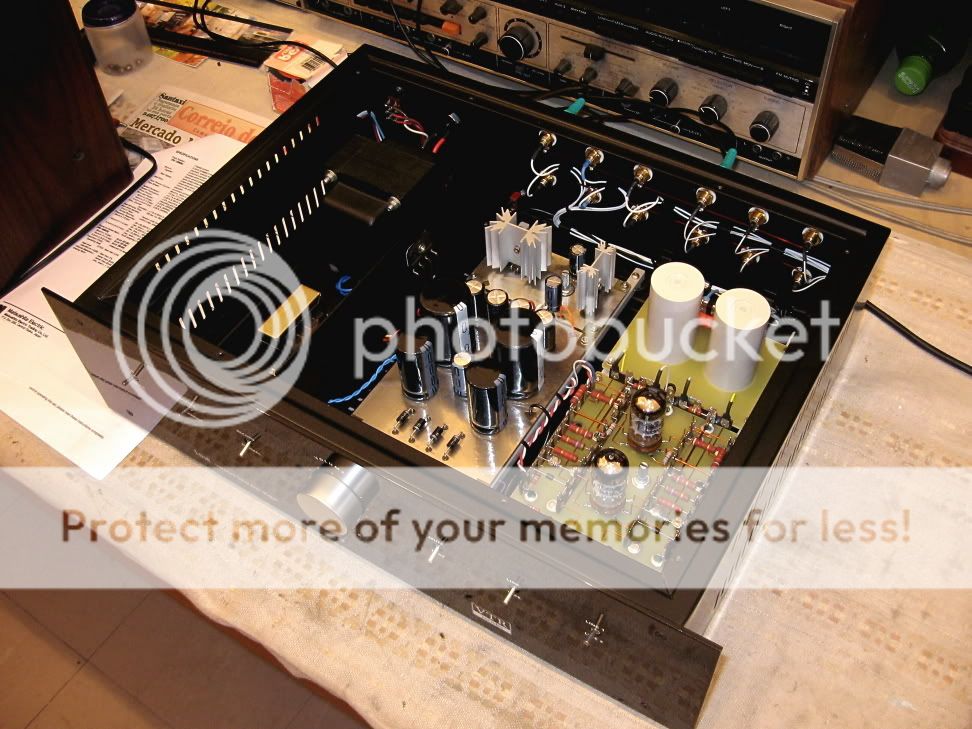
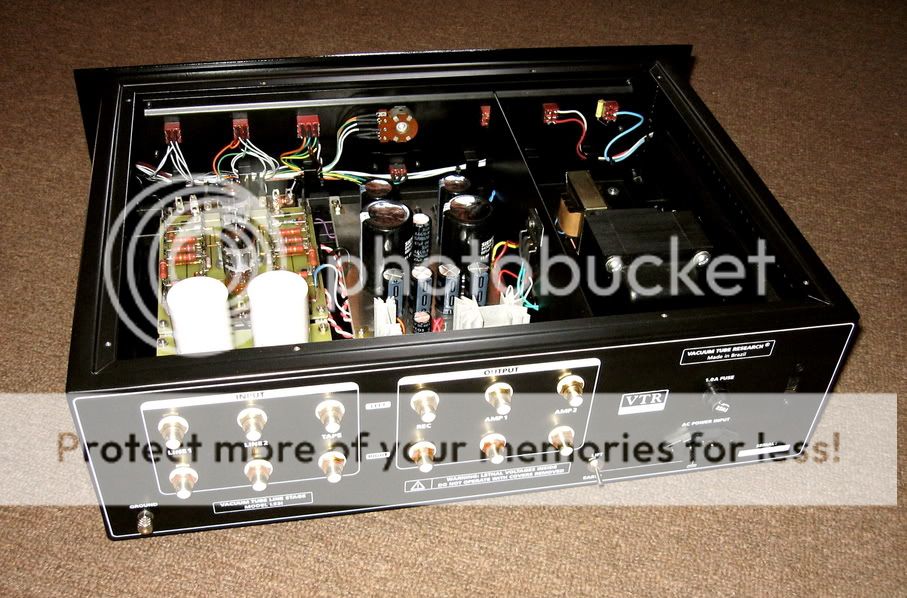
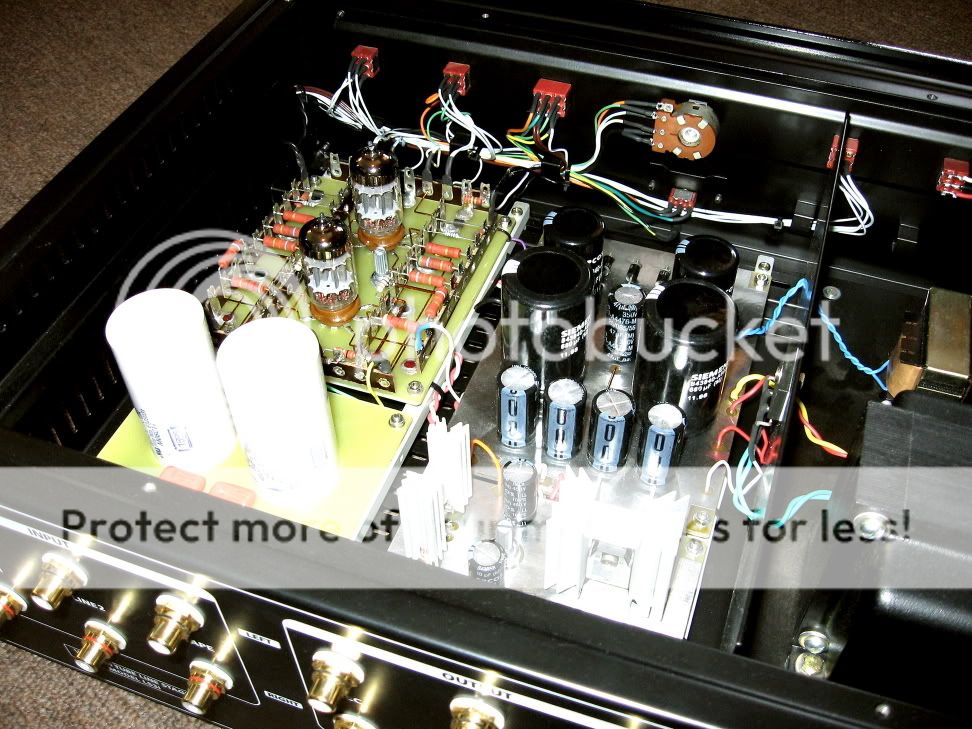
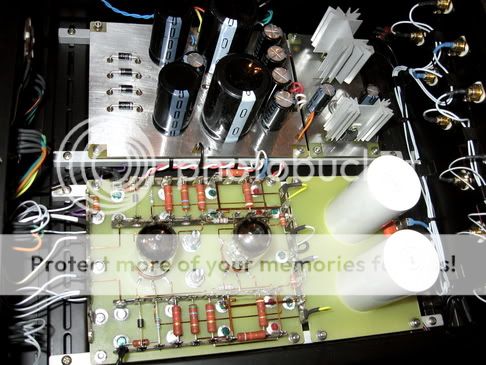
My most recent work: the LS3i tube line stage.
Oversized power supply: 120VA trafo, pi filter cap/choke/cap and stabilized for B+, DC heaters.
Audio section (2 x 12AU7A) is a grounded cathode input stage and a "tweaked" cathode follower as the buffer stage and coupled to the outputs by Cambridge AC caps.
All signal wiring is milspec Tefzel hook up wire.
Chassis is a heavy gauge steel.
Wonderfull sound and improving by the day: those Tefzel teflon insulation wires and Cambridge coupling caps are tough guys to convince in yelding good audiophile sounds in the beguining...
We have to wait a good deal of listening time until everything starts to sing in an audiophile approved way...
Guess some 50 hours minimum.
[ ]s
Ricardo







- Home
- Amplifiers
- Tubes / Valves
- Photo Gallery
